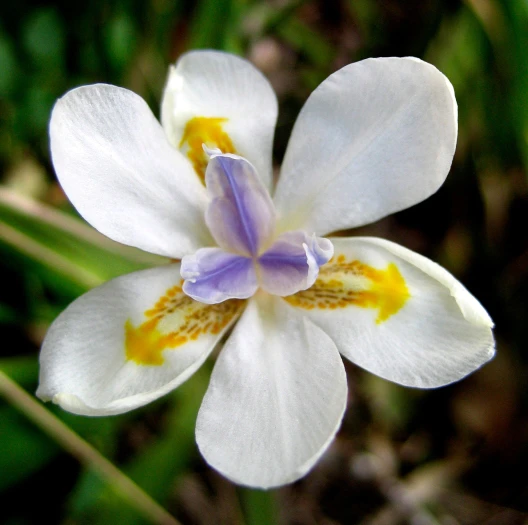African Iris
(Moraea vegeta)
African Iris (Moraea vegeta)
/
/

Amada44
Public domain
Image By:
Amada44
Recorded By:
Copyright:
Public domain
Copyright Notice:
Photo by: Amada44 | License Type: Public domain | License URL: https://creativecommons.org/publicdomain/zero/1.0/ | Uploader: Amada44 | Publisher: Wikipedia Commons | Title: Dietes_iridioides_001.jpg | Notes: African Iris. Also called Fortnight lily or Morea iris | Permission: Own work, all rights released (Public domain) | ObjectName: Dietes iridioides 001 | UsageTerms: Public domain |



















Estimated Native Range
Climate Requirements for Saitama, Japan
| This Plant | Your Site | Plant Suitability for Your Location | ||
|---|---|---|---|---|
| • Precipitation | 12" - 62" | 54" | Aquatic | Aquatic |
| • High Temp. | 72°F - 92°F | 87°F | Your summer temperatures are normal for this plant. | Excellent |
| • Low Temp. | 22°F - 49°F | 31°F | Your winter temperatures are normal for this plant | Excellent |
This plant may not grow well at your location - your precipitation is too high.
Summary
Moraea vegeta, commonly known as African Iris, is an evergreen perennial bulb native to coastal dunes and rocky slopes in the Western Cape of South Africa. It typically grows up to 60 cm (24 in) in height and 30-60 cm (12-24 in) in spread, forming dense basal tufts with an extended fan shape. The African Iris has sarmentous stems with branches bearing lily-like flowers that are 6-8 cm (2.3-3.1 in) wide, predominantly white with distinctive yellow central markings and sometimes violet accents. The flowers are composed of six free tepals that are not fused at the base, and they are known for their ephemeral beauty, lasting only a few days. The flowering season is in the spring, and while the flowers are not particularly long-lasting, they are quite showy during their brief display.
The African Iris is valued for its striking flowers and architectural foliage, making it a popular choice for rock gardens, coastal gardens, and as an accent plant in mixed borders. It is also used in xeriscaping due to its low water requirements. In cultivation, it thrives in full sun to part shade and prefers well-drained soils. While it is drought-tolerant once established, it benefits from occasional watering during prolonged dry periods. Gardeners should be aware that it can be sensitive to overwatering and poor drainage. There are no major disease or pest issues, but snails and slugs can sometimes be a problem. It is not known to be invasive outside its native range, but as with all non-native plants, care should be taken to prevent unintended spread.CC BY-SA 4.0
The African Iris is valued for its striking flowers and architectural foliage, making it a popular choice for rock gardens, coastal gardens, and as an accent plant in mixed borders. It is also used in xeriscaping due to its low water requirements. In cultivation, it thrives in full sun to part shade and prefers well-drained soils. While it is drought-tolerant once established, it benefits from occasional watering during prolonged dry periods. Gardeners should be aware that it can be sensitive to overwatering and poor drainage. There are no major disease or pest issues, but snails and slugs can sometimes be a problem. It is not known to be invasive outside its native range, but as with all non-native plants, care should be taken to prevent unintended spread.CC BY-SA 4.0
Plant Description
- Plant Type: Bulb
- Height: 2-4 feet
- Width: 2-4 feet
- Growth Rate: Moderate
- Flower Color: Purple, White, Yellow
- Flowering Season: Spring, Summer, Fall
- Leaf Retention: Evergreen
Growth Requirements
- Sun: Full Sun, Part Shade
- Water: Low
- Drainage: Medium
Common Uses
Bee Garden, Bird Garden, Butterfly Garden, Deer Resistant, Drought Tolerant, Low Maintenance, Showy Flowers
Natural Habitat
Native to coastal dunes and rocky slopes in the Western Cape of South Africa
Other Names
Common Names: Fortnight Lily, Morea Iris
Scientific Names: Dietes vegeta, Moraea vegeta, Moraea iriopetala, Iris tristis, Moraea juncea, Moraea tristis, Vieusseuxia graminifolia, Ferraria tristis, Iris crassifolia
GBIF Accepted Name: Moraea vegeta L.